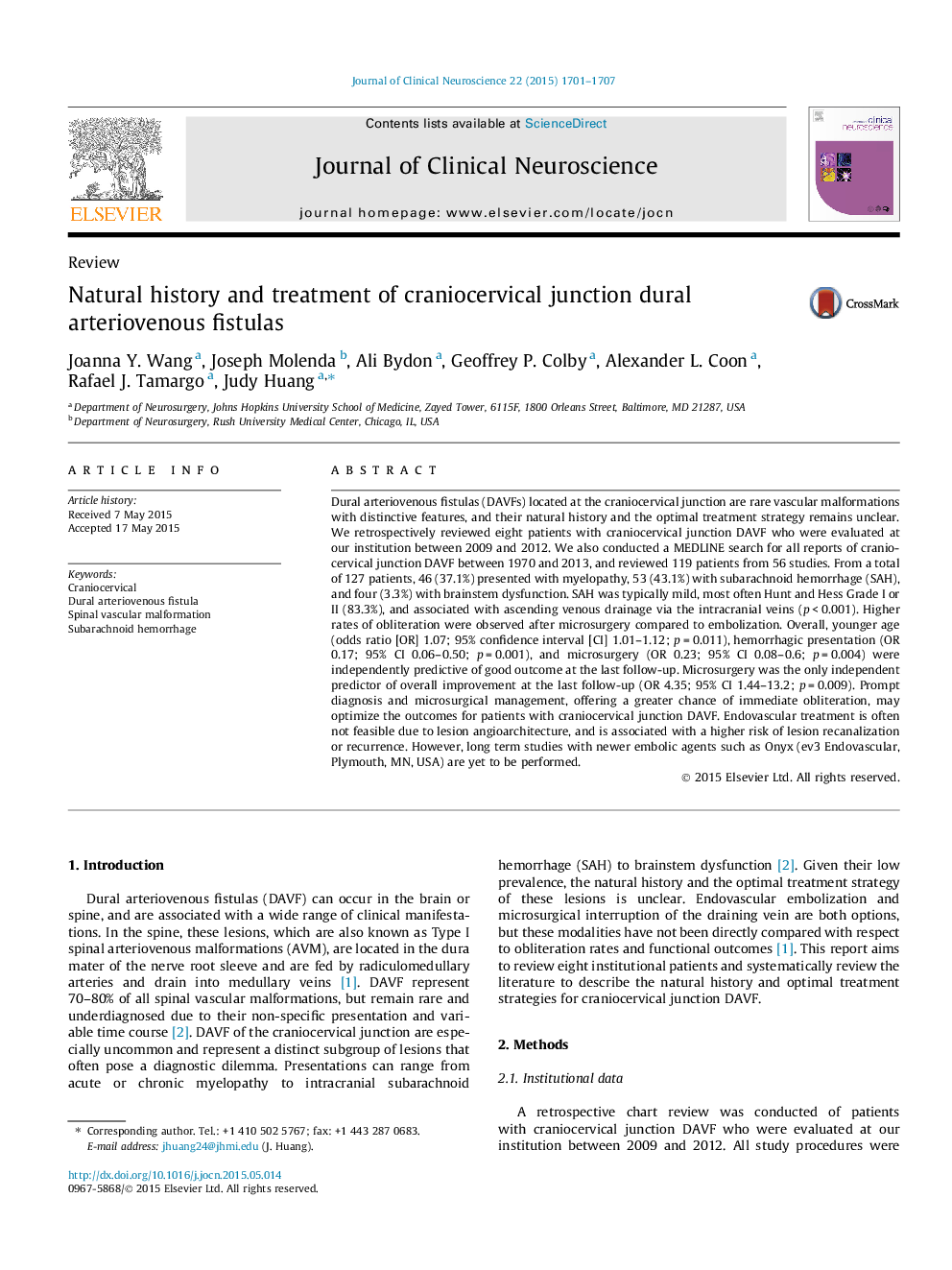| Article ID | Journal | Published Year | Pages | File Type |
|---|---|---|---|---|
| 3058637 | Journal of Clinical Neuroscience | 2015 | 7 Pages |
•Eight patients with craniocervical junction dural arteriovenous fistulas (DAVF) evaluated at our institution were reviewed.•A systematic literature review of 56 studies with 119 cases was performed.•Prompt diagnosis and microsurgical management allows for immediate obliteration.•Younger age, hemorrhagic presentation, and microsurgery were predictive of good outcomes.
Dural arteriovenous fistulas (DAVFs) located at the craniocervical junction are rare vascular malformations with distinctive features, and their natural history and the optimal treatment strategy remains unclear. We retrospectively reviewed eight patients with craniocervical junction DAVF who were evaluated at our institution between 2009 and 2012. We also conducted a MEDLINE search for all reports of craniocervical junction DAVF between 1970 and 2013, and reviewed 119 patients from 56 studies. From a total of 127 patients, 46 (37.1%) presented with myelopathy, 53 (43.1%) with subarachnoid hemorrhage (SAH), and four (3.3%) with brainstem dysfunction. SAH was typically mild, most often Hunt and Hess Grade I or II (83.3%), and associated with ascending venous drainage via the intracranial veins (p < 0.001). Higher rates of obliteration were observed after microsurgery compared to embolization. Overall, younger age (odds ratio [OR] 1.07; 95% confidence interval [CI] 1.01–1.12; p = 0.011), hemorrhagic presentation (OR 0.17; 95% CI 0.06–0.50; p = 0.001), and microsurgery (OR 0.23; 95% CI 0.08–0.6; p = 0.004) were independently predictive of good outcome at the last follow-up. Microsurgery was the only independent predictor of overall improvement at the last follow-up (OR 4.35; 95% CI 1.44–13.2; p = 0.009). Prompt diagnosis and microsurgical management, offering a greater chance of immediate obliteration, may optimize the outcomes for patients with craniocervical junction DAVF. Endovascular treatment is often not feasible due to lesion angioarchitecture, and is associated with a higher risk of lesion recanalization or recurrence. However, long term studies with newer embolic agents such as Onyx (ev3 Endovascular, Plymouth, MN, USA) are yet to be performed.
